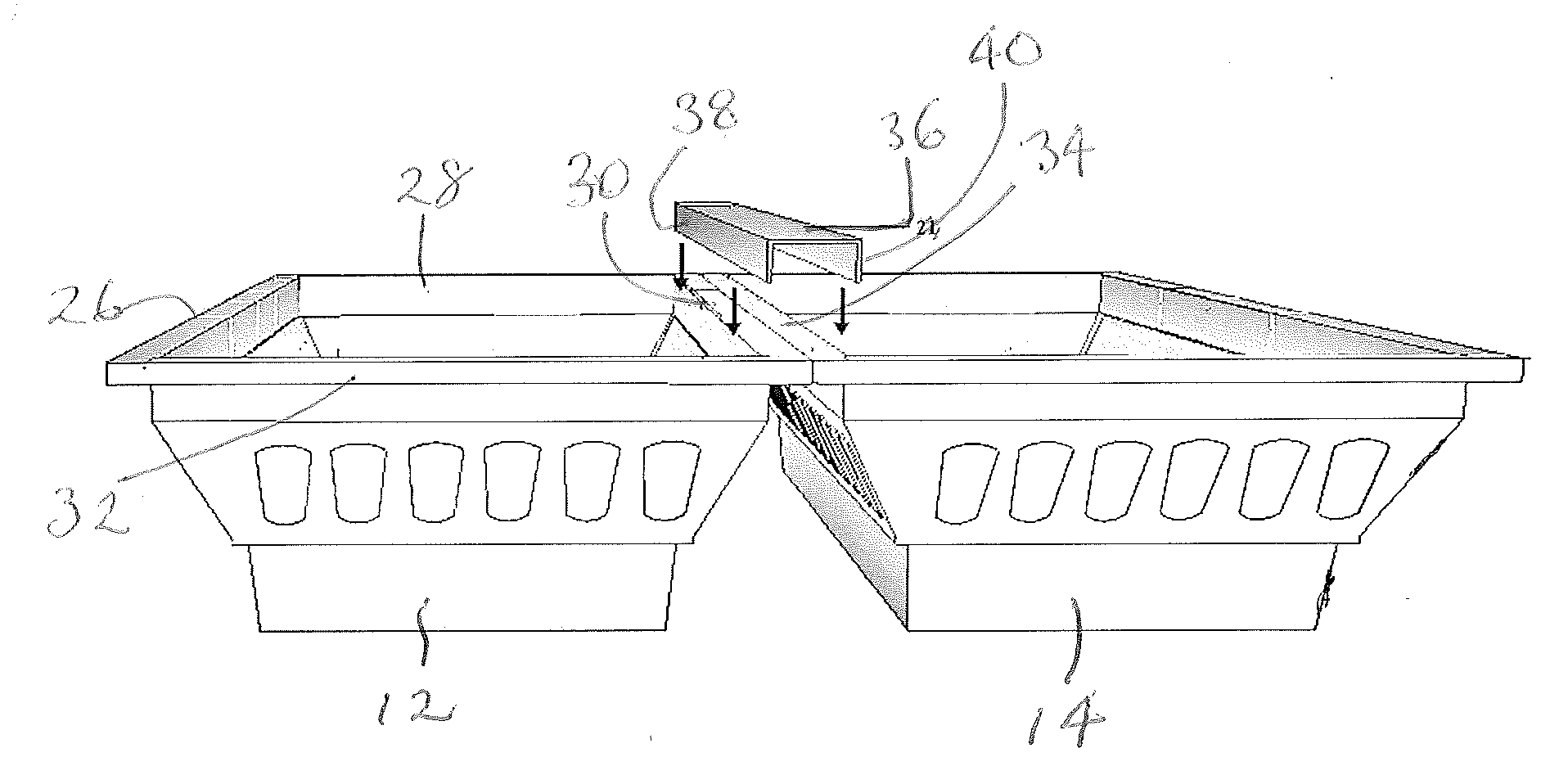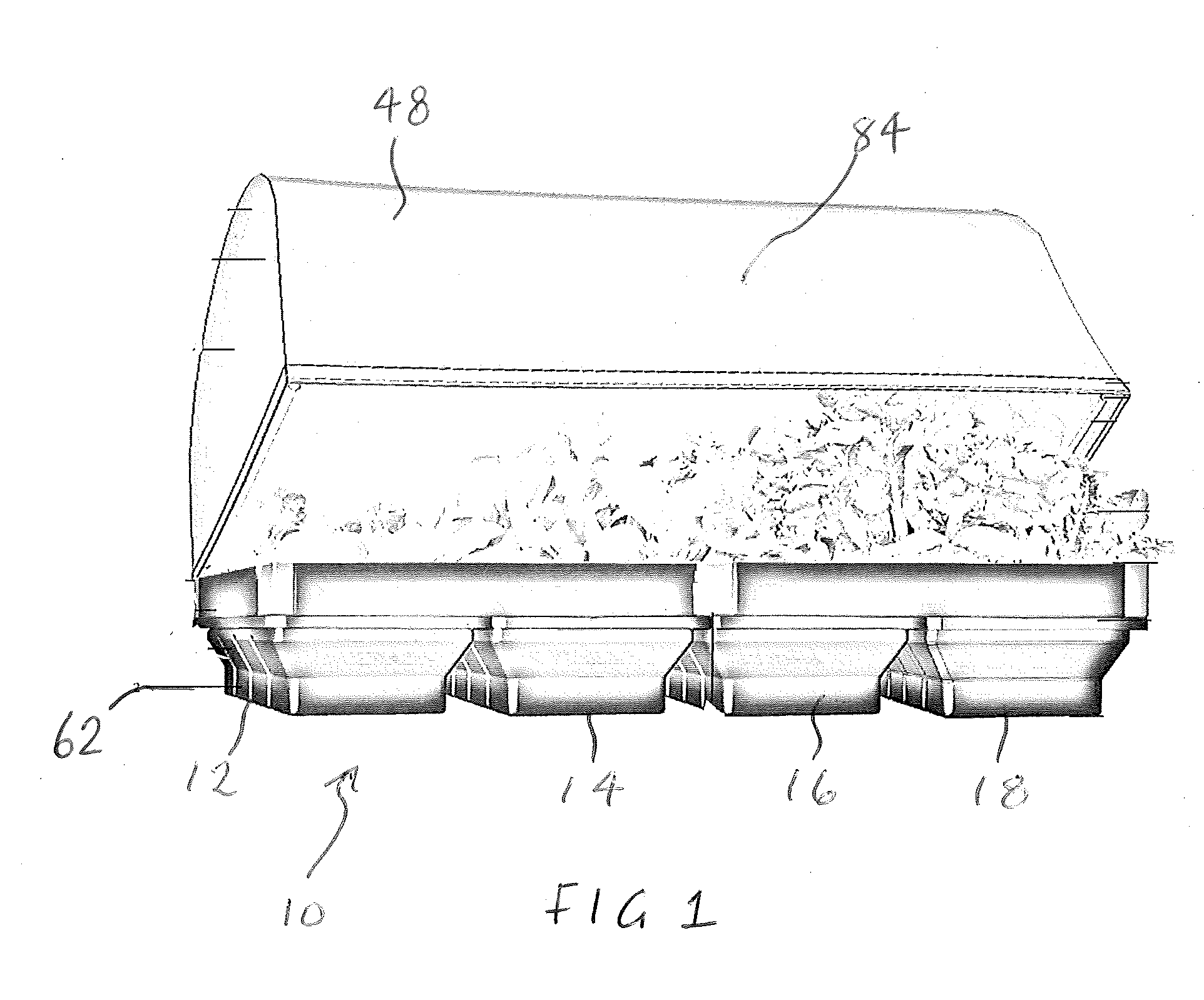Modular Garden Planter Bed Structure
a planter bed and modular technology, applied in the field of modular structure and/or a, can solve the problems of less than desirable, severely limited in their size, and the bed provides only minimal improvement, and achieves the effect of increasing the overall depth of the modular structur
- Summary
- Abstract
- Description
- Claims
- Application Information
AI Technical Summary
Benefits of technology
Problems solved by technology
Method used
Image
Examples
Embodiment Construction
[0042]The following sets forth the invention with reference to an exemplary embodiment as illustrated in the drawings. It is to be understood, however, that this exemplary embodiment is provided by way of example only and nothing therein should be taken as a limitation upon the overall scope of the invention.
[0043]Referring to FIG. 1, there is provided a modular structure 10 for provision of a raised garden planter bed. In this exemplary embodiment, the modular structure consists of four modules in the form of receptacles 12, 14, 16&18.
[0044]Turning to FIG. 2, each receptacle 12, 14, 16, 18 is a self-contained enclosure having a mouth 20 defined by a rim 22. The rim 22 has four sides 26, 28, 30&32 covered by a circumferential lip 24. Each receptacle 12, 14, 16, 18 is designed to contain suitable planting soil or other growing media.
[0045]Referring to FIG. 3, a recycling tray 60 is provided and accommodated within each receptacle 12, 14. The recycling tray 60 provides a self-watering...
PUM
| Property | Measurement | Unit |
|---|---|---|
| temperatures | aaaaa | aaaaa |
| modular structure | aaaaa | aaaaa |
| length | aaaaa | aaaaa |
Abstract
Description
Claims
Application Information
 Login to View More
Login to View More - R&D
- Intellectual Property
- Life Sciences
- Materials
- Tech Scout
- Unparalleled Data Quality
- Higher Quality Content
- 60% Fewer Hallucinations
Browse by: Latest US Patents, China's latest patents, Technical Efficacy Thesaurus, Application Domain, Technology Topic, Popular Technical Reports.
© 2025 PatSnap. All rights reserved.Legal|Privacy policy|Modern Slavery Act Transparency Statement|Sitemap|About US| Contact US: help@patsnap.com



